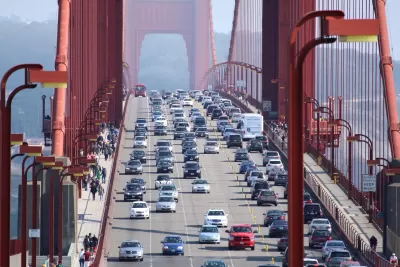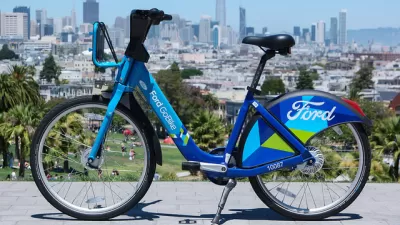The city is seeing more transit use and biking, but driving and congestion are also on the rise.

The San Francisco Municipal Transportation Agency recently released its latest assessment of transportation trends in the city, the San Francisco Mobility Trends Report 2018. "Compiled by SFMTA staff, the report assesses which methods of transit SF residents are most likely to use, employing everything from traffic counts to official ridership stats from transit agencies to Census data about bike use," reports Adam Brinklow.
While the report says that transit use and cycling has increased since 2010, particular time frames tell different stories. For example, transit ridership is still down from a peak in 2002, and biking has decreased in recent years, with a more than 24 percent drop since 2015.
In addition, the growth in San Francisco's population has resulted in a 6 percent increase in registered vehicles since 2010 as well as more congestion. The report says that half of the congestion from 2010 to 2016 can be attributed to ride hailing and the other half to population and employment changes.
The increase in transit use in San Francisco distinguishes it from most other U.S. cities where transit ridership is in decline. "However, it’s still clear from the analysis that City Hall has trouble breaking San Franciscans from their reliance on cars. Silicon Valley is only exacerbating the situation," notes Brinklow.
FULL STORY: Despite everything, San Franciscans are driving more

Trump Administration Could Effectively End Housing Voucher Program
Federal officials are eyeing major cuts to the Section 8 program that helps millions of low-income households pay rent.

Planetizen Federal Action Tracker
A weekly monitor of how Trump’s orders and actions are impacting planners and planning in America.

Ken Jennings Launches Transit Web Series
The Jeopardy champ wants you to ride public transit.

From Planning to Action: How LA County Is Rethinking Climate Resilience
Chief Sustainability Officer Rita Kampalath outlines the County’s shift from planning to implementation in its climate resilience efforts, emphasizing cross-departmental coordination, updated recovery strategies, and the need for flexible funding.

New Mexico Aging Department Commits to Helping Seniors Age ‘In Place’ and ‘Autonomously’ in New Draft Plan
As New Mexico’s population of seniors continues to grow, the state’s aging department is proposing expanded initiatives to help seniors maintain their autonomy while also supporting family caregivers.

USDOT Waters Down Self-Driving Car Regulations
The agency is reducing reporting requirements for autonomous vehicles and cars with self-driving features, prompting concern among safety advocates who say transparency is essential to the safe deployment of AV technology.
Urban Design for Planners 1: Software Tools
This six-course series explores essential urban design concepts using open source software and equips planners with the tools they need to participate fully in the urban design process.
Planning for Universal Design
Learn the tools for implementing Universal Design in planning regulations.
Heyer Gruel & Associates PA
Ada County Highway District
Institute for Housing and Urban Development Studies (IHS)
City of Grandview
Harvard GSD Executive Education
Toledo-Lucas County Plan Commissions
Salt Lake City
NYU Wagner Graduate School of Public Service





























